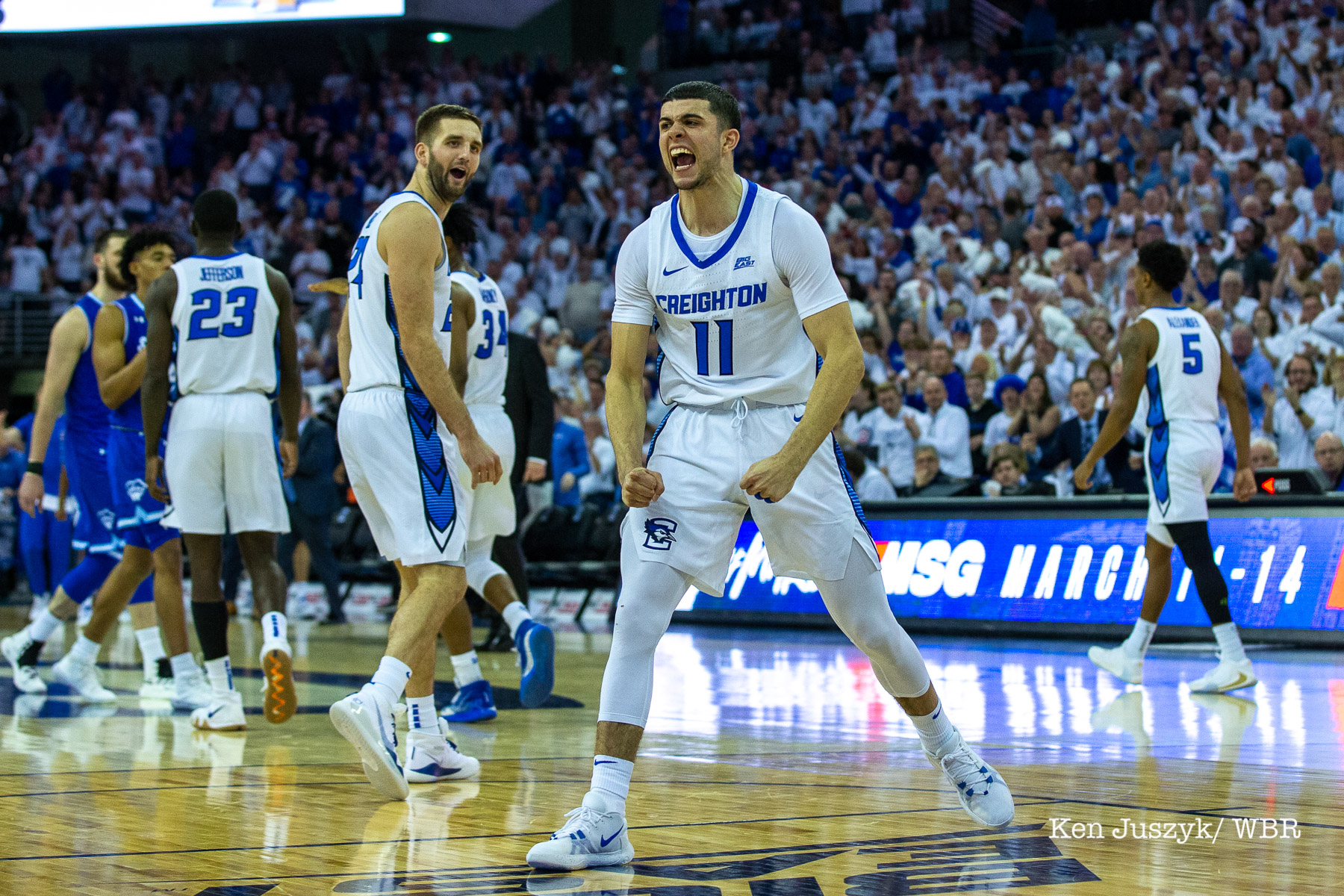With COVID-19 continuing to affect almost every facet of daily life, the only thing certain about the 2020-21 college basketball season is that it will be unlike any other. Most of what we thought we knew about Creighton’s slate is now up in the air. For example, here’s what CU’s original non-conference schedule looked like a few months ago:
- November 14: South Dakota State
- November 21: Arizona State
- November 25-27: Battle 4 Atlantis (Duke, Ohio State, Memphis, West Virginia, Wichita State, Utah, Texas A&M)
- December 3: “The Battle” (Big East/Big 12 Challenge) at Kansas
- December 12: at Nebraska
- Date TBD: Kennesaw State
- Date TBD: Central Arkansas
With Connecticut joining the league and the Big East slate growing to 20 games, CU had 11 non-conference spots to fill as opposed to 13 in years past. So just two holes remained in that schedule sketch above: one was rumored to be a Gavitt Games matchup against Iowa, and the other would almost certainly have wound up being a home buy game.
What’s happened to that schedule now? The season will start November 25 with a maximum of 25 games, or 27 for teams participating in a three-game MTE (and a minimum of 13 games required for teams hoping to advance to postseason play). And 20 of those 27 are spoken for, with the Big East indicating they plan to play a full round-robin schedule.
The Battle 4 Atlantis tourney was slated to move to the Sanford Pentagon in Sioux Falls, South Dakota, with the same field of eight teams. Then Duke pulled out in favor of their own multi-team event featuring Howard, Elon, and Bellarmine. That threw the status of the unnamed South Dakota version of the Atlantis event into doubt. It remains up in the air. Assuming it happens in some form, with some mix of the remaining seven teams, CU has four remaining non-conference spots for the six games they’d already booked. So something has to give.
According to Jon Rothstein, the game at Kansas is still on, and tentatively scheduled for one day later than originally planned: Friday, December 4.
The game at Nebraska is under discussion, with athletic director Bruce Rasmussen telling the Omaha World-Herald on September 21 that the two schools are evaluating whether they can make it work this year.
In that same article, Rasmussen indicated the Jays would like a couple of tune-up games where they can play the bulk of their roster before the Big East gauntlet. That would seem to indicate South Dakota State, Central Arkansas, and Kennesaw State (or similar teams) will fill two additional spots. So if the Nebraska game happens, that’s the entire non-conference slate. Arizona State would have to move to 2021-22 in that scenario.
So that’s the likely opponents. When would the games be played? Reports indicate the league is considering playing four or more conference games in December to hedge their bets against a COVID outbreak disrupting games in January or February. It makes sense; with most campuses ending the fall semester at Thanksgiving, there’s a six or seven week window where campuses will be quiet, if not completely closed. Why not take advantage of that time to get in as many conference games as you can? And indeed, this morning Rothstein reported some specific dates being targeted for that plan:
The New York Post’s St. John’s beat writer Zach Braziller is hearing the same thing, adding that because of the complexity of all the moving pieces, the league is not yet close to releasing a schedule.
That many Big East games in December would necessarily mean moving non-conference games into January and February, which also makes a ton of sense. Teams would have flexibility to shuffle things around — if an opponent is unable to play because of an outbreak, you might be able to find a replacement on short notice. Rasmussen floated that idea to the World-Herald in that same article from September. And you can imagine mid-major teams holding open dates on their schedules for that very scenario, ready to swoop in and get the type of game they struggle to get under normal circumstances.
As for where the games will be played, Villanova coach Jay Wright told reporters on a Zoom call in mid-September that the Big East prefers to play at campus sites, but a bubble plan is not off the table. Both Omaha and Indianapolis have been mentioned as possible sites for a bubble.
The NCAA’s health and safety guidelines might make a bubble inevitable. Among the recommendations: if any Tier 1 individual tests positive (generally speaking, all players, coaches, and support staff), the entire team must quarantine for 14 days. During that time, only individual workouts are allowed. That could wipe out four or five games depending on the timing, and two weeks of practices. St. John’s athletic director Mike Cragg told the New York Post the 14-day quarantine is challenging, while a league source told the paper that the guideline was making them revisit the idea of a bubble as more realistic.
Look no further than college football for to see how this could wreck havoc on hoops. Through the first three weeks of the season, 23.4% of games were postponed or canceled due to COVID outbreaks. It’s no wonder Wright said on that Zoom call that “I do think we all understand that this year everybody might not play the same number of games for a lot of reasons.”
Yep, it will be a season unlike any other, but after a spring and summer where we were unsure if college hoops would be played at all, the fact that we’re likely to get any type of season is great news for hoops fans.


